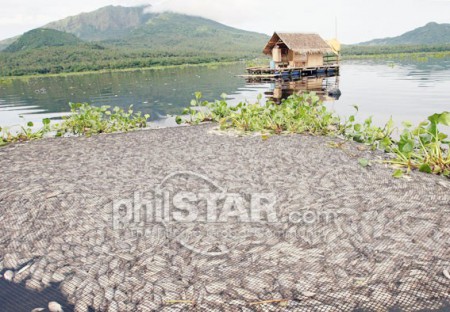One of the little-appreciated aspects of climate change is that greater variability brings with it more frequent extremes, and if a system is already stressed it doesn’t take much to tip it over the edge. In many places, aquaculture is such a system. The photo 1 is from November 2010, but a glance at the news shows that massive fishkills are a common feature, and not just in The Philippines.
What seems to happen is a series of “unlucky” breaks. The fish are already densely stocked and overfed, and in the morning oxygen levels in the water can be dangerously low because the plants don’t produce oxygen in the dark. Most days, that’s alright, because the algae and plants in the water start to photosynthesise and put out oxygen. A cloudy morning, however, can reduce photosynthesis, and if the day is also hot oxygen levels fall even further as dissolved oxygen escapes. Worse, in hotter water the metabolism of the fish revs up, so they need more oxygen. Throw in a rainstorm, especially if soils around the fish farms are bare, and you get an influx of turbid water that further blocks photosynthesis, dropping oxygen lower still. Tonnes of fish suffocate. And lakes may take years to recover.
Authorities recommend “premature harvest” but that is clearly a Band-aid. The sustainable solution is to make the system more resilient, by decreasing stocking levels and feeding, and trying to ensure that rainwater inflows do not carry too much sediment into the water. Fish farmers cannot control the weather; can they adapt to extremes that can certainly control their business?

Another ingredient in fish kills is high nutrients in the water, which are in run off from agriculture on the shores and upstream along the rivers. High nutrients lead to lots of green phytoplankton, which die then rot to strip the oxygen out of the water.